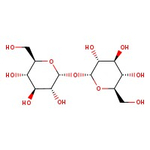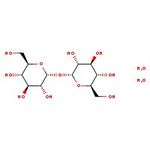Search Thermo Fisher Scientific
Thermo Scientific Chemicals
D-(+)-Trehalose dihydrate, 99%
CAS: 6138-23-4 | C12H22O11 | 342.30 g/mol
Catalog number ALFA19434.22
View Price:Sign InSign in to see your account pricing. Need an account? Register with us today.
Quantity:
100 g
Specifications
Chemical Name or MaterialD-(+)-Trehalose dihydrate
CAS6138-23-4
Health Hazard 1H500
Melting Point97°C to 99°C
Storage Note 1Hygroscopic
View more
D-(+)-Trehalose dihydrate is used as a food additive in many processed foods and pharmaceutical excipients. It is widely used as a direct replacement of conventional sweeteners and protects the cells from various environmental stresses. It finds application in the treatment of Huntington's disease and Parkinson's disease.
This Thermo Scientific Chemicals brand product was originally part of the Alfa Aesar product portfolio. Some documentation and label information may refer to the legacy brand. The original Alfa Aesar product / item code or SKU reference has not changed as a part of the brand transition to Thermo Scientific Chemicals.
Solubility
Soluble in water and hot alcohol.
Notes
Store in cool place. Hygroscopic. Incompatible with strong oxidizing agents.
Soluble in water and hot alcohol.
Notes
Store in cool place. Hygroscopic. Incompatible with strong oxidizing agents.
RUO – Research Use Only
General References:
- Schultz, I.; Vollmers, F.; Luhmann, T.; Rybak, J. C.; Wittmann, R.; Stank, K.; Steckel, H.; Kardziev, B.; Schmidt, M.; Hogger, P.; Meinel, L. Pulmonary Insulin-like Growth Factor I Delivery from Trehalose and Silk-Fibroin Microparticles. ACS Biomater. Sci. Eng. 2015, 1 (2), 119-129.
- Amaro, M. I.; Tajber, L.; Corrigan, O. I.; Healy, A. M. Co-Spray Dried Carbohydrate Microparticles: Crystallisation Delay/Inhibition and Improved Aerosolization Characteristics Through the Incorporation of Hydroxypropyl-beta-cyclodextrin with Amorphous Raffinose or Trehalose. Pharm. Res. 2015, 32 (1), 180-195.




